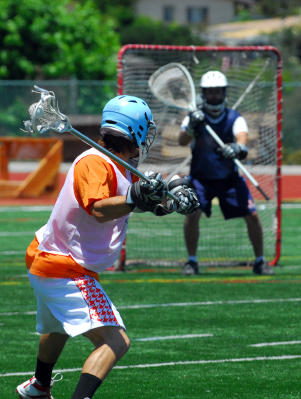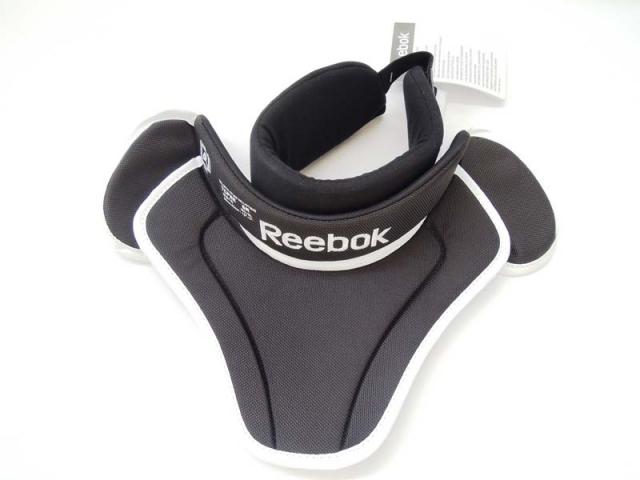With the continued popularity of traditional contact/collision sports like football and ice hockey, and the increased popularity of sports such as lacrosse, it is important for sports parents to be aware of the safety issues each present, and the equipment kids should wear to minimize the risk of injury.
One often overlooked area of an athlete's body that needs protection from potentially life-threatening injury is the throat, particularly in ice hockey and lacrosse, both of which are played with sticks and high-speed projectiles (pucks/balls) that can come in contact with a player's throat.
Watch a hockey or lacrosse game and you'll often see a puck or ball bouncing off shoulder pads, shin pads or another piece of protective equipment. Unfortunately, while the wearing of throat guards (pieces of plastic that hang down from their helmets to cover the throat area) is mandatory for both hockey and lacrosse goalies must wear throat guards, it isn't required for field players. While throat guards are readily available at sporting goods stores and on line, they aren't popular with players and, because they aren't mandatory, many athletes simply don't wear them. Indeed, players may not even know they are available.
Potentially life-threatening injury
The risk of a life-threatening injury to the neck, however, is real.
The major structures of the throat (esophagus, larynx, cartilage, vocal cords, and trachea) all play important roles in daily living. If compromised by acute trauma (e.g. a direct blow to the throat from a ball, stick, elbow, or from being crushed in a player pile-up), a an injury to any of these structures can be severe or life-threatening.
Signs and symptoms of throat injury
Some of the important signs and symptoms of a traumatic injury to the throat are:
- changes in voice tone;
- difficulty breathing and/or talking;
- difficulty opening or closing the mouth;
- inability to swallow or pain when swallowing;
- difficulty breathing;
- changes in complexion due to lack of oxygen; and/or
- a smooth bulging of the skin or little bulges under the skin accompanied by an unusual crackling sensation as the gases are pushed under the skin (a rare condition called subcutaneous emphysema, which is a leaking of air from a compromised throat structure into the surrounding skin tissue).
Immediate medical care required
As a parent or coach, if you notice any of these symptoms, it is extremely important that you:
- contact the child's physician immediately or visit the nearest hospital emergency room; and
- not allow the athlete to eat or drink anything because of the risk of food being lodged in the throat, which could complicate treatment or obstruct the airway.
Essential piece of safety equipment
The first step in reducing throat injuries in high contact sports is to be pro-active and make sure your child wears a throat protector. The

earlier youth athletes begin to wear these devices, the more comfortable they will be wearing them as they move up the competitive ladder, where the risk of blows from a puck or ball travelling at a high rate of speed, or contact with the neck from a stick, or crush injury, will be higher.
The bottom line is that wearing a throat guard could save your child's life.
Important update: On June 19, 2014, the Consumer Product Safety Commission announced a voluntary recall by Reebok-CCM of TCPRE Senior and Junior Throat Collars due to a laceration hazard.
Posted June 10, 2011; updated June 14, 2018








